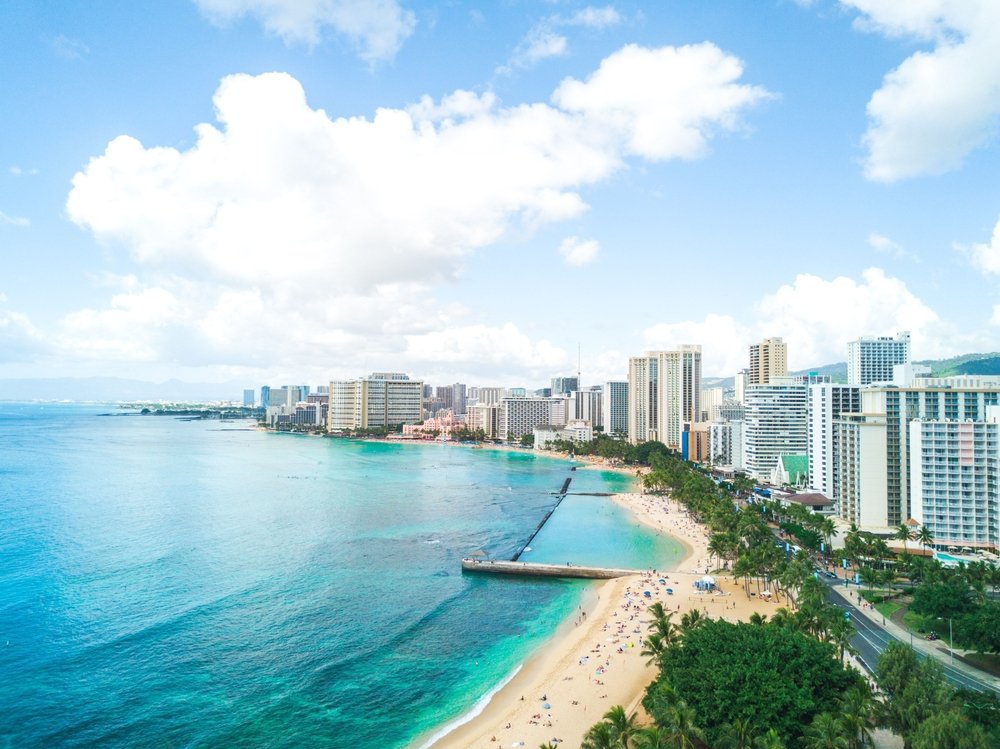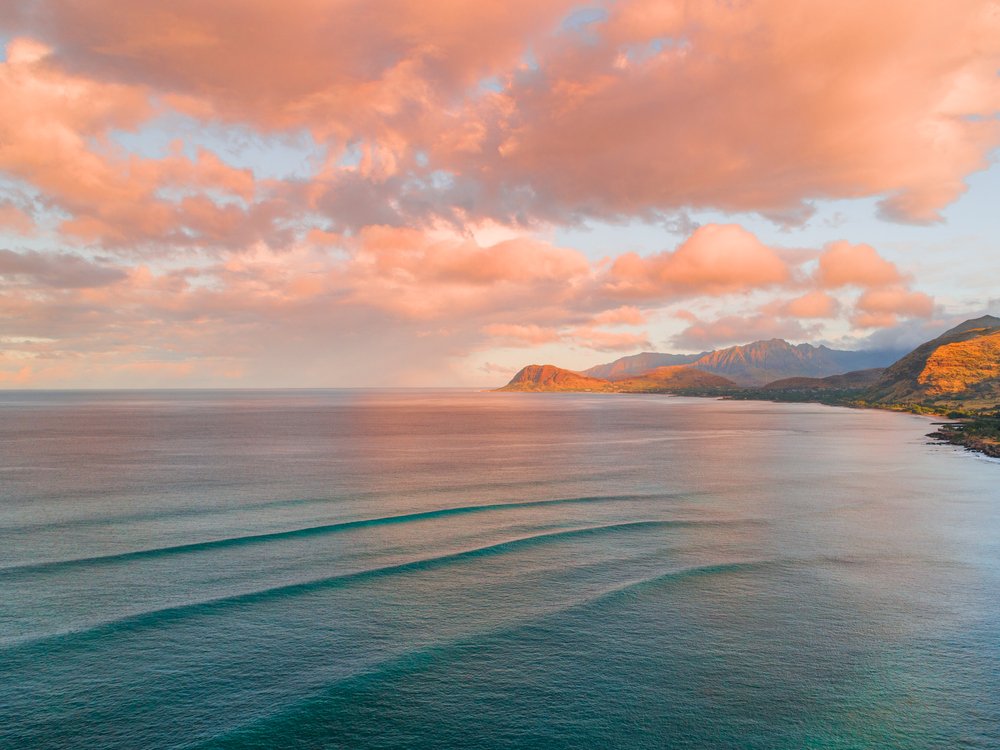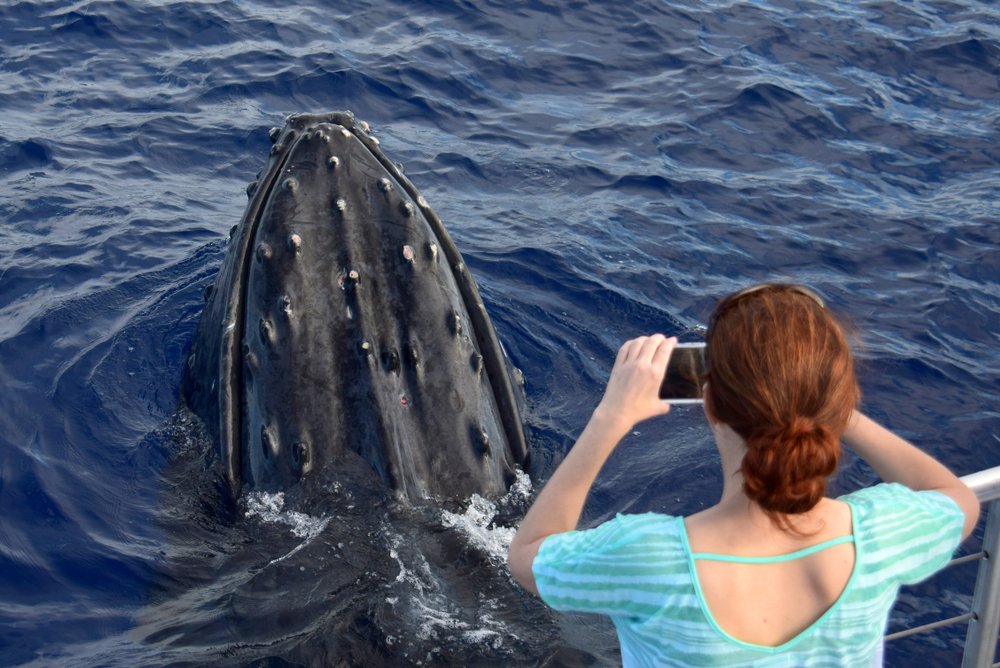Introduction to Whale Watching in Oahu
Whale watching in Oahu isn’t just a tourist attraction; it’s a journey into the heart of nature’s grandest shows. As a Hawaii enthusiast and advisor, I’ve experienced the magic of these majestic creatures and am excited to share my insights.
Understanding the Whale Watching Season in Oahu

The best time to witness these magnificent creatures is between December and April. Humpback whales are the stars of the show, captivating watchers with their sheer size and playful antics.
Oahu, a premier destination for whale watching, comes alive with the arrival of humpback whales, primarily between December and April. During these months, the warm, shallow waters surrounding the island become a haven for these giants, who migrate from the cold Alaskan seas to mate, give birth, and nurture their calves.
Peak Season
The peak of the whale watching season in Oahu is generally from January to March. During this period, the chances of spotting whales are at their highest. Humpback whales, known for their acrobatic displays, can often be seen breaching the water’s surface, tail slapping, and even singing – a mesmerizing experience for any onlooker.
Types of Whales
While humpback whales are the stars of the show, other species, such as pilot whales and sperm whales, can occasionally be spotted. Each species offers a unique viewing experience, contributing to the rich tapestry of marine life around Oahu.
Behavioral Patterns
Understanding the behavioral patterns of whales can enhance your whale watching experience. Mornings are typically the best time to spot these majestic animals, as the ocean is calmer, making it easier to see them.
Environmental Considerations
The whale watching season also brings attention to the importance of marine conservation. Oahu’s commitment to protecting these gentle giants and their habitat is evident in the respectful practices of local tour operators and the education provided to visitors.
Choosing the Right Whale-Watching Tour
Safety and comfort are paramount. I recommend tours that offer intimate group experiences and prioritize environmental stewardship, like ‘Ocean Joy Cruises’ or ‘Wild Side Specialty Tours’.
Preparation for Whale Watching

Dress in layers and bring a waterproof jacket. Essential items include binoculars, sunscreen, and a camera to capture those breathtaking moments.
Dress Appropriately
Weather at sea can be unpredictable, so dressing in layers is key. A waterproof jacket is essential to protect against sea spray and rain. Lightweight, long-sleeved shirts and pants will shield you from the sun, while a hat and sunglasses provide additional protection.
Seasickness Prevention
If you’re prone to seasickness, prepare ahead. Over-the-counter medication like Dramamine can be effective. Alternatively, consider natural remedies like ginger tablets or acupressure wristbands. It’s also advisable to avoid heavy meals before embarking.
Bring the Right Gear
Binoculars are a must for a closer view of the whales. While most tour boats will get you close enough, binoculars can enhance the experience, especially for spotting whales from a distance. Also, don’t forget your camera or smartphone to capture those memorable moments.
Sun Protection
The sun’s rays are stronger on the water. Use a broad-spectrum sunscreen with a high SPF to protect your skin. Reapply sunscreen every two hours, or more frequently if you get wet.
Stay Hydrated
Bring along a water bottle to stay hydrated. Avoiding alcohol and drinking plenty of water can also help prevent seasickness.
Educate Yourself
Knowing what to expect enhances the experience. Read up on the types of whales you might encounter and their behaviors. Understanding these magnificent creatures adds depth to your whale watching adventure.
Be Patient and Respectful
Whale watching requires patience; sightings are not guaranteed. Respect the wildlife and adhere to regulations regarding how close boats can get to the whales.
By following these preparation tips, you’re setting yourself up for a successful and memorable whale watching experience. Whether you’re on a boat off the coast of Oahu or watching from the shore, these preparations will help ensure a safe, comfortable, and enriching experience with nature’s gentle giants.
Best Locations for Whale Watching on Oahu
From the famous Waikiki Beach to the less-traveled West Coast, each spot offers a unique vantage point. The West Coast, though less crowded, provides a more intimate experience with nature.
Waikiki Beach

Waikiki Beach is not just famous for its surfing and sunsets; it’s also a fantastic place for whale watching. From December to April, the waters off Waikiki become a playground for humpback whales. The ease of access and the abundance of tour operators in this area make it a convenient choice for both tourists and locals.
West Coast of Oahu

The West Coast, or the Leeward side, offers a more serene whale-watching experience. Far from the bustling crowds of Honolulu, areas like Waianae and Makaha provide a tranquil setting. The crystal-clear waters here enhance your chances of spotting whales, and the backdrop of the Waianae mountain range creates a picturesque scene.
Makapu’u Point

For those who prefer land-based whale watching, Makapu’u Point is a superb choice. Situated on the southeastern tip of the island, this spot gives you a panoramic view of the ocean. The Makapu’u Lighthouse Trail, an easy hike, leads to vantage points where binoculars can reveal the splendor of whales breaching in the distance.
North Shore

The famed North Shore, known for its massive winter waves, is also a hotspot for whale watchers. The higher swells don’t deter the whales, and places like Haleiwa offer boat tours that take you up close to these gentle giants.
Each of these locations on Oahu presents a unique opportunity to witness humpback whales in their natural environment. Whether you prefer a boat tour or a scenic hike, Oahu’s best whale-watching spots promise an experience that is both thrilling and humbling, a true testament to the island’s natural beauty.
Photography Tips for Whale Watching

Use a telephoto lens and set your camera to a fast shutter speed. Remember, it’s about capturing the essence of the moment, not just the perfect shot.
Camera Equipment
A DSLR or mirrorless camera with a telephoto lens is ideal for whale watching photography. Lenses with a focal length of 200mm to 400mm are recommended for capturing detailed shots from a distance. If you’re using a smartphone, consider a quality clip-on zoom lens for better results.
Camera Settings
To capture the fast movement of whales, especially during breaching, set your camera to a fast shutter speed, around 1/1000th of a second or faster. Use a higher ISO setting if you’re in lower light conditions to avoid blurry images. Aperture settings should be adjusted to ensure a good depth of field; an aperture of f/8 is a good starting point.
Focus Mode
Utilize continuous autofocus (AF-C) mode to keep moving subjects sharp. This is particularly useful for tracking whales as they move through the water.
Anticipate the Action
Whale watching requires patience and a keen eye. Observe their behavior patterns – a whale about to breach will often display tell-tale signs like a deeper dive or increased surfacing activity.
Composition
While capturing the whale is the main focus, don’t forget about the composition. Including elements like the horizon or surrounding landscape can add context and depth to your photos.
Lighting
Early morning or late afternoon, known as the golden hours, provide the best natural lighting for photography. Position yourself with the sun behind you to avoid backlighting your subject.
Respect Wildlife
Remember to maintain a respectful distance. Use your zoom rather than trying to get too close, which can disturb the whales and is often against regulations.
Weather and Sea Conditions
Calm, clear days are ideal for whale watching. Keep an eye on weather forecasts and sea conditions to plan your trip.
Local Culture and Whale Watching
In Hawaiian culture, whales are revered as sacred creatures. Engaging with local stories adds depth to the whale watching experience.
Conclusion and Final Thoughts
Whale watching in Oahu is an unforgettable experience that combines wildlife, culture, and adventure. I encourage everyone to embark on this journey with respect and wonder.
FAQs
- What’s the best time of day for whale watching in Oahu?
- Morning tours often offer calmer seas and clearer skies.
- Can you see whales from the shore in Oahu?
- Yes, especially from high vantage points like Diamond Head.
- Are there age restrictions for whale watching tours?
- Most tours welcome all ages, but check with individual operators.
- How close can the boats get to the whales?
- Regulations typically require boats to maintain a certain distance for the safety of the whales.
- What if I don’t see any whales?
- Many tour operators offer return tickets if no whales are spotted.
Additional resources:
- Guide to Whale-Watching on Oahu – The Homebody Tourist: This guide offers detailed insights into whale watching on Oahu, including the best times and places for whale watching, things to consider before booking a tour, and highlights specific locations such as Makapu’u Lighthouse Trail, Diamond Head Trail, Halona Blowhole, and Shark’s Cove. It emphasizes the importance of timing and preparation for a successful whale-watching experience.
- Whale Watching in Oahu (8 Best Tours & Insider Tips 2023) – Gowanderly.com: This page provides an overview of whale watching in Oahu, highlighting it as one of the most important whale sanctuaries in the world. It offers tips on whale watching tours, including specific recommendations such as a morning whale watching tour with breakfast and a family-friendly cruise ship option. These tours offer close encounters with whales and other marine wildlife, adding to the whale-watching experience.
